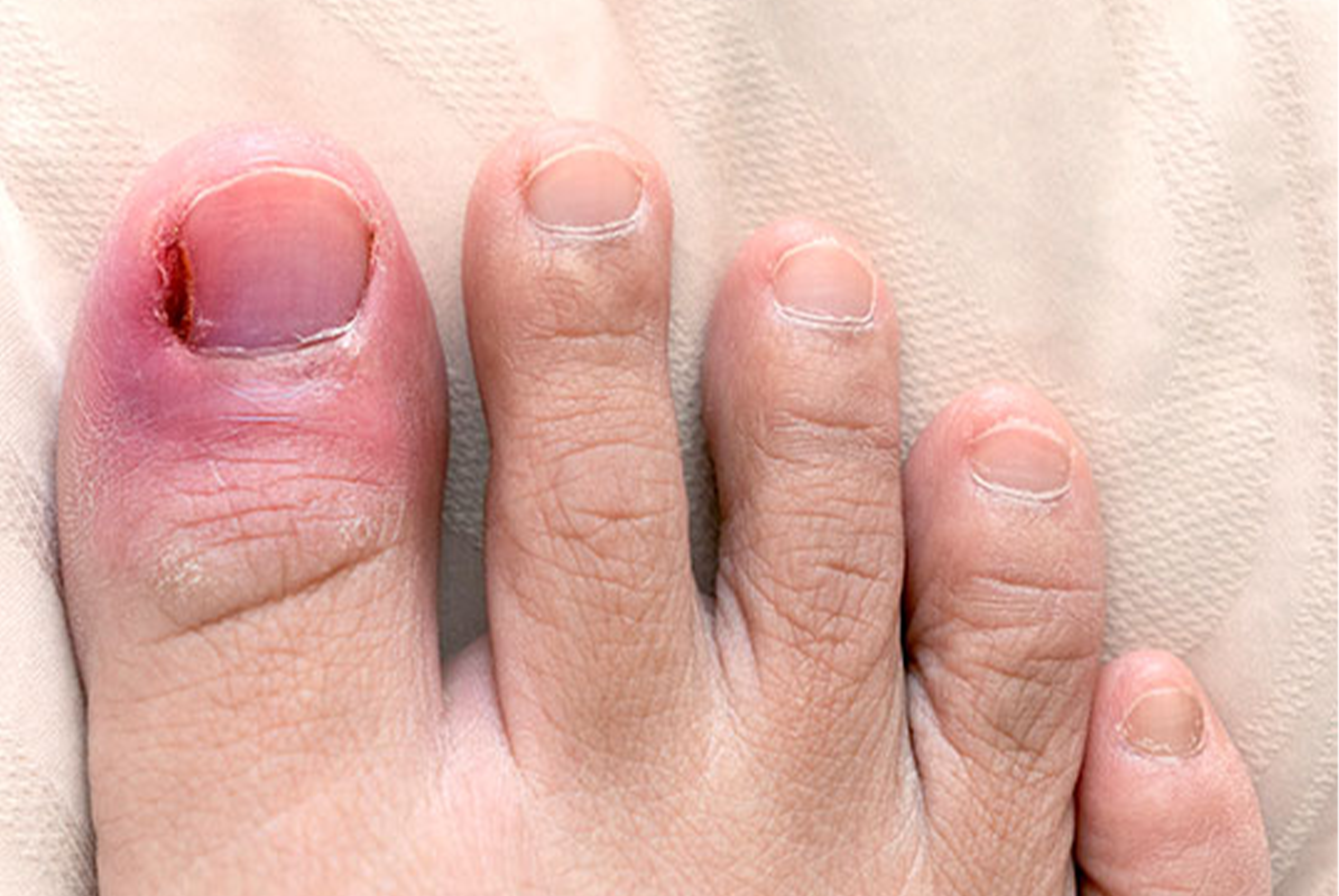Common risk factors of ingrown toenails
- When the nail is cut too short or rounded at the edges
- Wearing shoes that are too tight
- History of injury to toenail
- Sweaty feet
- Having naturally curved toenails
- Obesity
- Medical conditions which causes your legs to swell
- Taking medication to treat cancer
Symptoms Of Ingrown Toenail
An ingrown toenail can be easily diagnosed without any complicated examination.
Signs and symptoms of ingrown toe nail include
- Pain and tenderness along the side of the affected nail
- Redness and swelling may be present if it is left untreated
- For severe cases, infection, with pus and discharge may be present as well
Complications Of Ingrown Toenail
Ingrown toenails are usually noticeable early on as they hurt. If treated in time, it is possible to prevent any bacterial infection such as cellulitis. This usually presents with inflammation and pus around the area. Some people may experience lethargy and have a fever if the infection is serious. Complications can be severe if in someone with diabetes, who often has poor blood flow and nerve damage to the feet or have a poor immune system. Leading to poor healing wounds or bone infection.
Treatment For Ingrown Toenails
The most suitable treatment for ingrown toenails depends on the how serious it is. Early stages of ingrown toenail can be treated with a ‘slant back cut’ done by a Podiatrist and monitoring of nail growth. If toenails are naturally curved, a special brace can also be applied to shape the growth of the nail and prevent future recurrence. In some cases, a Nail Avulsion procedure can be performed to remove the affected part of the nail. This can involve removing a small bit of nail or the whole nail, depending on the condition. Techniques can be applied to prevent future nail growth in the affected area.
Our team of highly experienced Podiatrists can provide an accurate assessment and advise on the most suitable treatment for your ingrown toenail. Get in touch with us to find out more.
Podiatrist Recommended Care Tips For Ingrown Toenails
- Trim your toenails straight across. Do not trim toenails in a curved shape. If you have a condition that causes poor blood flow to your feet and you can’t trim your nails, see a Podiatrist regularly to have your nails trimmed.
- Keep toenails at a moderate length. Trim toenails they are at the same length with the tips of your toes. If you trim your toenails too short, the pressure from your shoes on your toes may direct a nail to grow into the tissue.
- Wear shoes that fit properly. Shoes are narrow or too tight in the front places pressure on your toes or pinch them. This may cause a nail to grow into surrounding tissue. If you have nerve damage to your feet, you may not be able to feel if your shoes fit too tightly. Take care to buy and wear properly fitted shoes, allowing space for your toes to wriggle in the front of the shoe.
- Wear appropriate footwear. If your work puts you at risk of injuring your toes, wear protective footwear, such as steel-toed shoes. If you tend to have sweaty feet, consider wearing open toed or ‘breathable’ shoes.
- Check your feet regularly. Check your feet daily for signs of ingrown toenails or other foot problems.
